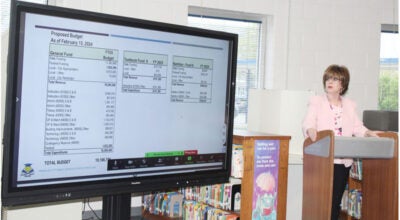Navy eyes Franklin airport for practice landings
Published 12:25 pm Saturday, October 2, 2010
FRANKLIN—The Navy announced Friday it will begin contract negotiations with the City of Franklin to host touch-and-go practice landings for two types of turboprop aircraft at Franklin Municipal Airport.
“We’re really excited about this,” Franklin Mayor Jim Councill said Friday. “We have a history with the Navy that goes back to World War II, and this is an opportunity for us to help the Navy meet their mission. At the same time, the Navy is willing to pay for access to services.”
Gov. Bob McDonnell also praised the news.
“This is a great utilization of resources between the City of Franklin and the U.S. Navy,” McDonnell said Friday. “The Franklin Municipal Airport is a logical and convenient choice that meets the current needs of the Navy. In addition, the City of Franklin will see direct economic benefits from the lease.”
The Navy wants to conduct fewer than 20,000 touch-and-go landings a year at the airport for the E-2 Hawkeye, an early warning system aircraft, and the C-2 Greyhound, which is used for logistical purposes. About 50 planes, which are based at Naval Station Norfolk, would land at Franklin.
Ted Brown, media relations officer for the Navy’s Fleet Public Affairs Office, said when the Navy deeded the airport to Franklin in 1947, it retained the right to share the use of the airport.
Brown said the E-2 and C-2 landings would be performed both day and night.
“What we usually do, with the E-2s and C-2s, is conduct the field carrier landing practice training Monday through Friday,” he said. “There will be two to five aircraft performing anywhere between 24 and 32 touch-and-go operations within a three-hour period.”
According to Brown, there could one or two three-hour training periods each day.
“When possible, the Navy would like to complete operations by 10 p.m. each day,” Brown said. “Sometimes it could be well before, since it gets darker earlier in the winter. Required periods of increased operation may occur, but they would be followed by extended periods of few to no operations.”
Councill said the private aviation pattern at the airport would not substantially change.
“There will be times when nobody can land or take off because the military is using the airspace,” Councill said. “But it won’t be a major inconvenience and the schedule will be printed weeks in advance.”
Tony Clark, chairman of the group Virginians Against the Outlying Landing Field, said the news was positive for several reasons.
“It takes advantage of existing assets that won’t require the condemnation of private land,” Clark said Friday. “The aircraft that would practice at the airfield will be significantly quieter than an F-18, and it will reduce the stress on (Naval Auxiliary Landing Field) Fentress in Chesapeake, which the Navy claims as their primary reason for wanting an OLF in rural Western Tidewater.”
The Navy is currently sending most of the planes to Naval Air Station Jacksonville and Naval Outlying Landing Field Whitehouse in Florida five to six times a year for the practice landings because of capacity issues at Fentress.
“The city should be able to make some money, and we can do it in a way that doesn’t have a negative effect on our community,” Councill said. “It should be very favorable. It won’t replace what we have lost with IP, but it will certainly be very positive.”





